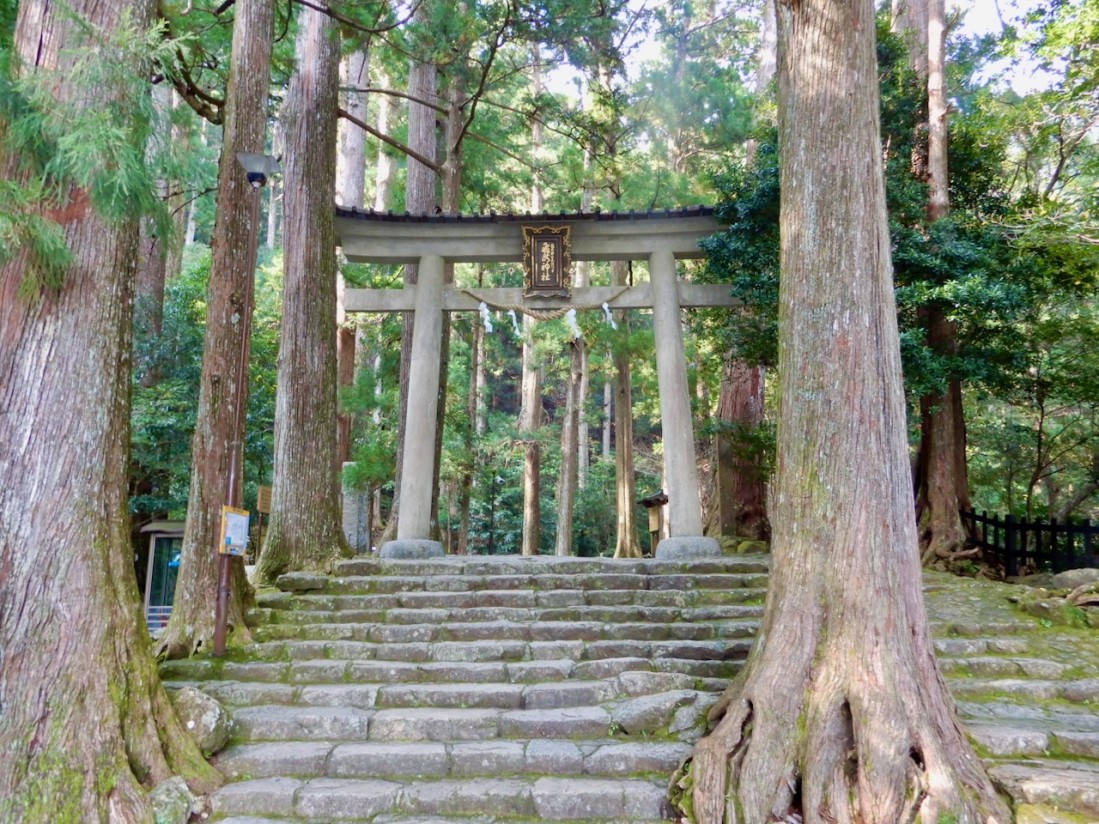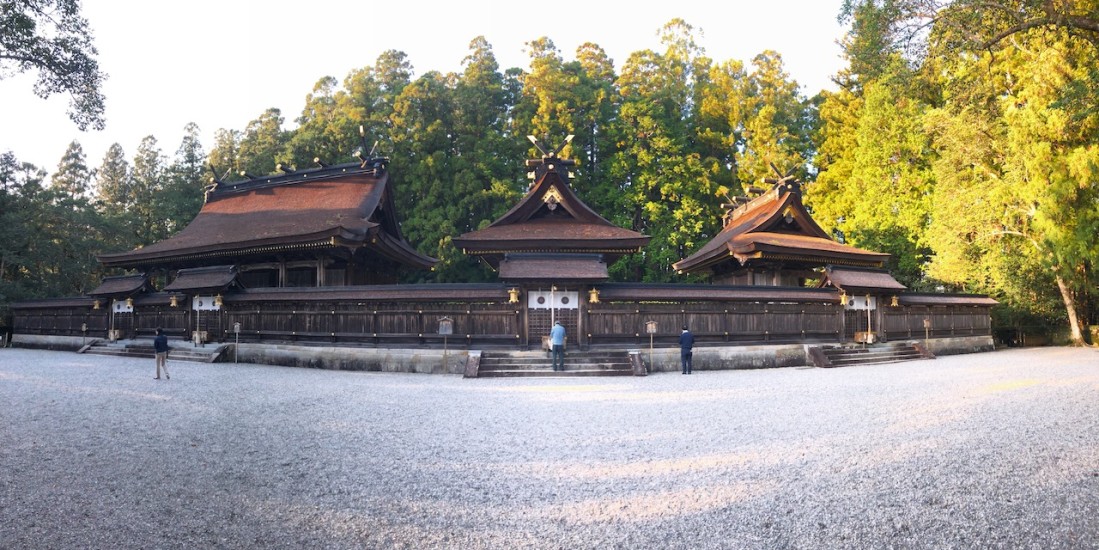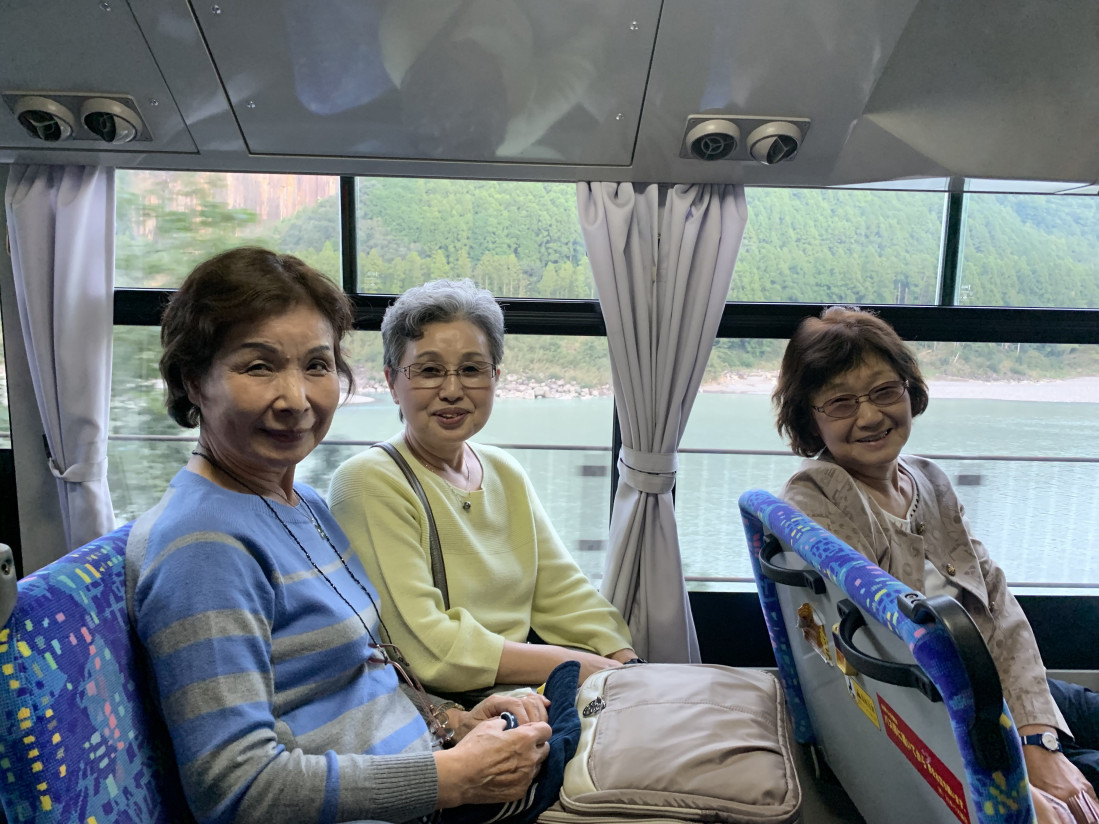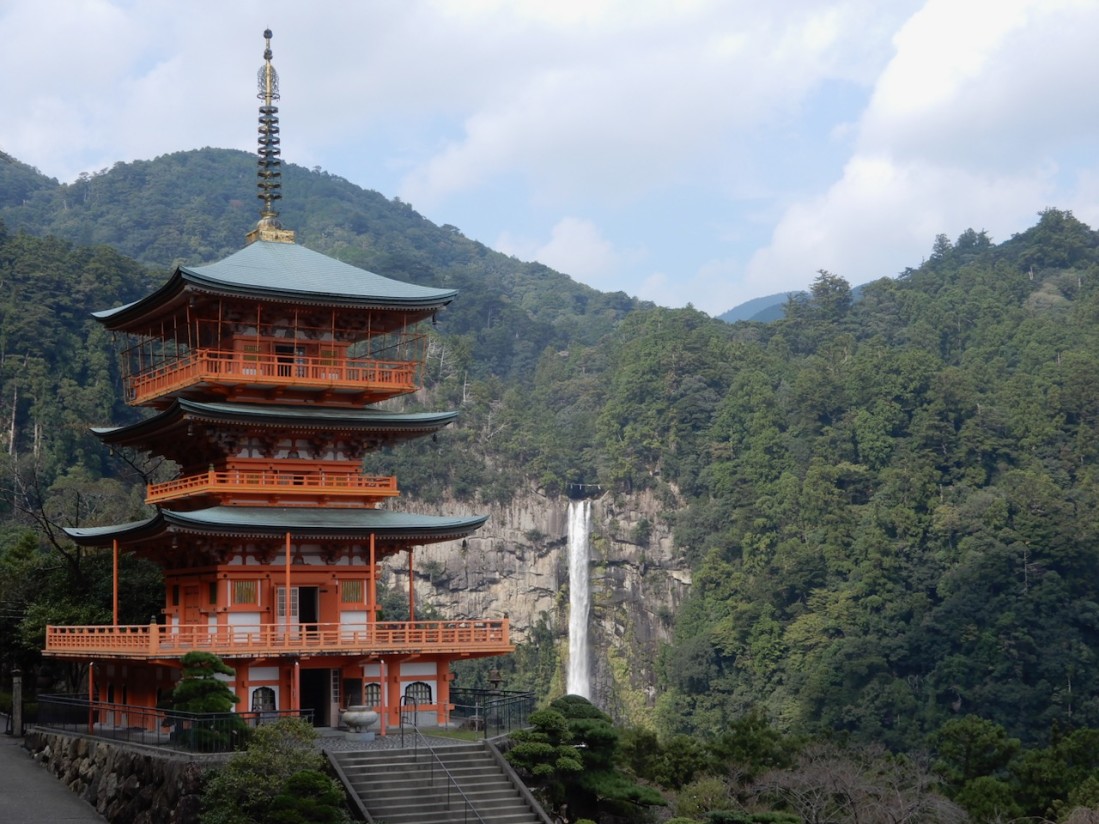It was just after four o’clock when we set off along the Nakahechi branch of the Kumano Kodo towards Takahara. The weather was misty and mild and our starting point was Takijiri-oji, a narrow river valley at the junction of two roads, home to a small shop and a Kumano information centre with exhibits and maps and a staff member who didn’t speak English. We were the only walkers leaving so late in the day (having overslept and been forced to catch a later train from Tokyo.)
A small temple at the bottom of the path welcomed visitors and pilgrims and the track was well marked, to the point of having helpful signs saying 'not Kumano Kodo.' The path rose steeply, taking us up through dense forest. Formed steps gave way to natural ones created by a lattice of tree roots and on flatter sections we padded quietly along a leafy path. It was damp but not muddy or sodden, tall pine trees standing sentinel and shrines dotting the way like talismans.
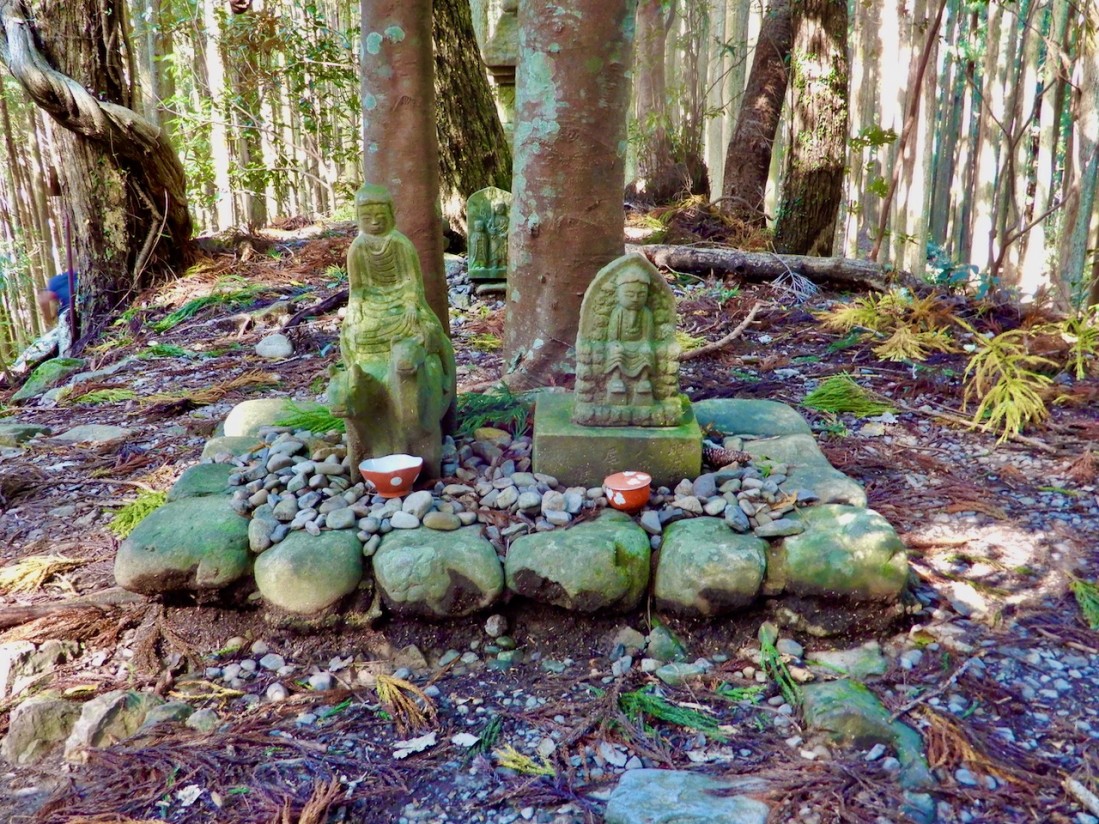
Shrines appear at regular intervals along the pathway

